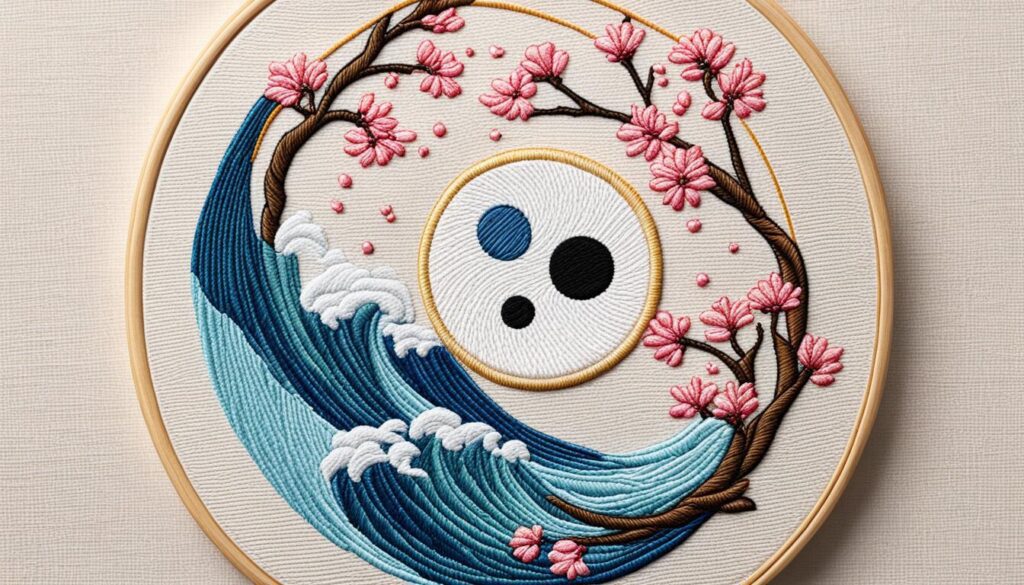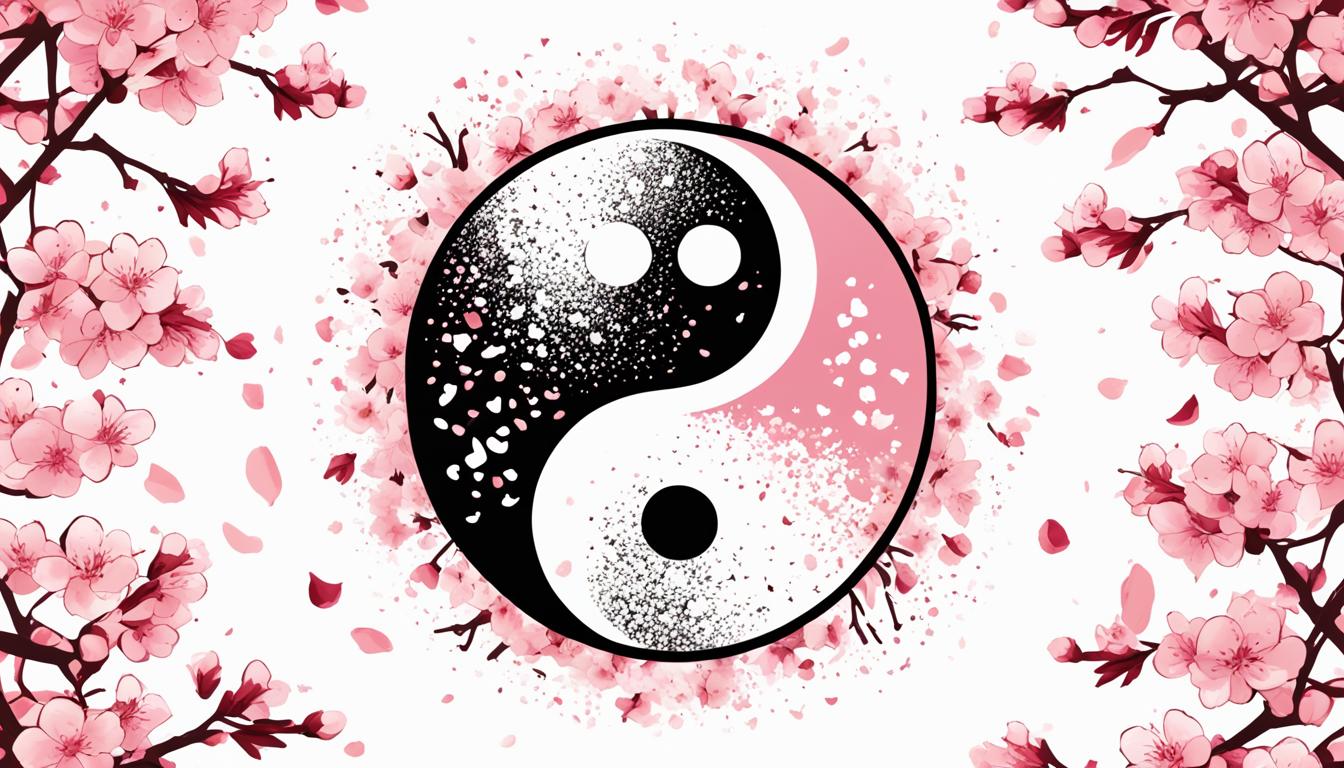Yin Yang, also known as inyo, onmyo, or onyo in Japanese, is an ancient Chinese philosophy of balance, harmony, and vital energy. It was transmitted to Japan from China and Korea around 1500 years ago. The philosophy of Yin Yang, often combined with the five phases/elements of Earth, Water, Fire, Wood, and Metal, has had a significant influence on Japanese culture. The imperial Bureau of Yinyang, unique to Japan, practiced divination, astromancy, geomancy, pacification of spirits, and more, for nearly 1200 years. Yin Yang represents the interplay of contrasting forces and is characterized by male/female, sun/moon, and dark/light. It is a fundamental concept in East Asian philosophy.
In this article, we will explore the meaning and grammar associated with Yin Yang in Japanese, discuss how to pronounce it correctly, provide equivalent words in English, and examine its contextual and cultural usage in Japan.
The Origins and Definitions of Yin Yang
The philosophy of Yin Yang has its origins in ancient China and has since become deeply ingrained in Chinese thought and culture. This concept of dualism explores the relationship between seemingly opposite or contrary forces and how they can be complementary, interconnected, and interdependent in the natural world.
Yin and Yang are not complete opposites but rather opposing and yet harmonious forces that give rise to each other through their interrelation. They represent the interconnectedness and interdependence of various aspects of life, such as male and female, dark and light, and other contrasting forces. This philosophy encompasses a wide range of linked meanings and represents the interplay of complementary forces.
The philosophy of Yin Yang is not limited to understanding the interplay of opposing forces. It also provides strategies and techniques for effective functioning in different circumstances. It recognizes that balance and harmony are key to navigating the complexities of life and achieving optimal outcomes.
The following table presents a summary of the definitions associated with Yin Yang in Chinese philosophy:
| Definition | Description |
|---|---|
| Complementary Forces | Yin and Yang are contrasting yet interconnected forces that rely on each other for existence. |
| Natural World | Yin Yang describes the dynamic and ever-changing nature of the world, where balance and harmony are essential. |
| Interdependence | Yin and Yang are interdependent and cannot exist in isolation. They constantly influence and transform each other. |
By understanding the origins and definitions of Yin Yang, we can gain insights into the fundamental principles of Chinese philosophy and its impact on various aspects of life.
The image above symbolizes the yin yang philosophy, depicting the harmonious interplay of opposing forces in a visually captivating manner.
The Influence of Yin Yang on Japanese Thought and Culture
Yin Yang has had a profound influence on Japanese thought and culture. Introduced to Japan around 1500 years ago, it has since permeated every level of society, shaping various aspects of Japanese life.
The philosophy of Yin Yang is intimately connected to the five phases or elements: Earth, Fire, Water, Metal, and Wood. These elements have been integrated into Japanese culture, influencing everything from art and literature to medicine and food.
In Japanese thought, Yin Yang represents the duality and interplay of contrasting forces. It is a concept deeply rooted in the belief that opposing forces are interconnected and necessary for balance and harmony.
In Japanese culture, the influence of Yin Yang can be seen in various practices. In Japanese medicine, Yin Yang is a fundamental concept used to understand and balance the body’s energies. It is believed that an imbalance of Yin and Yang can lead to illness, and treatment aims to restore harmony.
Even in Japanese food, Yin and Yang are considered when creating balanced and harmonious dishes. The concept of balancing flavors, textures, and even colors is an essential part of Japanese culinary traditions.
The influence of Yin Yang in Japan extends beyond medicine and food. Its principles have shaped Japanese aesthetics, architecture, and even the way relationships are perceived. Yin Yang continues to be a guiding force in Japanese thought and culture, emphasizing the importance of finding balance and harmony in all aspects of life.
Yin Yang in Japanese Medicine
In Japanese medicine, Yin Yang is a fundamental concept used to understand and balance the body’s energies. It is believed that the human body is composed of both Yin and Yang energies, and maintaining a proper balance between the two is essential for good health.
The theory of Yin Yang in Japanese medicine is closely related to the concept of Qi, the life force energy that flows through the body. It is believed that when Yin and Yang energies are in harmony, Qi flows smoothly, leading to optimal health and well-being.
Practitioners of Japanese medicine use various techniques to assess and restore the balance of Yin and Yang in the body. These techniques may include acupuncture, herbal medicine, dietary adjustments, and lifestyle recommendations.
By understanding and addressing the interplay of Yin and Yang energies, Japanese medicine aims to optimize health and promote healing. It recognizes the importance of balance and harmony in the body, aligning with the broader philosophy of Yin Yang in Japanese culture.
Yin Yang Symbols in Japanese Art and Literature

Yin Yang symbols hold a significant presence in both Japanese art and literature, adding depth and symbolism to these expressive mediums. While the iconic yin yang symbol may not be widely and systematically used, various representations and interpretations of Yin Yang can be found in traditional Japanese art forms.
One notable example is an embroidery created in Kyoto in 1798. This stunning artwork was displayed on the back of the Hoshoyama float during the Gion Festival. The embroidery, considered the earliest datable Japanese copy of a Chinese tapestry, prominently features the yin yang symbol. It skillfully portrays Chinese deities associated with the concepts of Yin and Yang, capturing the essence of the philosophy.
The representation of Yin Yang in Japanese art and literature serves as a testament to the influence and appreciation of traditional Chinese symbols in Japanese culture. These symbols not only enhance the visual appeal of art but also enrich the narrative and thematic elements of literature, offering deeper layers of meaning and understanding.
Below is an image of an exquisite yin yang symbol embroidery displayed at the Gion Festival:
Yin Yang and the Body in Japanese Medicine
In traditional Japanese medicine, the concept of Yin Yang plays a fundamental role in understanding and maintaining the balance of energies within the body. According to this philosophy, each person has a unique balance of Yin and Yang energies, and an imbalance between these forces can lead to various health issues.
The theory posits that Yin represents the feminine, passive, and cooling aspects, while Yang symbolizes the masculine, active, and warming qualities. Maintaining a harmonious balance between Yin and Yang is crucial for overall well-being and vitality.
Practitioners of traditional Japanese medicine use various methods to harmonize Yin and Yang energies, aiming to restore balance and promote healing. These methods can include acupuncture, herbal medicine, and personalized dietary recommendations.
Acupuncture, a technique that involves the insertion of thin needles into specific points along the body’s meridian lines, is believed to help regulate the flow of Yin and Yang energies. By stimulating these points, acupuncture can help rebalance the body’s energy and promote optimal health.
Herbal medicine, on the other hand, utilizes specific herbs and botanicals with Yin or Yang properties to address imbalances. Depending on the individual’s needs, certain herbs may be prescribed to tonify Yin or Yang energies and bring them back into equilibrium.
Diet also plays a significant role in harmonizing Yin and Yang in Japanese medicine. By choosing foods with cooling or warming properties, individuals can support their body’s unique energy balance. For example, cooling Yin foods like green vegetables and cucumbers can help reduce excess heat and inflammation, while warming Yang foods like ginger and ginseng can provide warmth and promote energy circulation.
By understanding and addressing the interplay of Yin and Yang energies within the body, traditional Japanese medicine offers a holistic approach to health and vitality. By restoring balance and harmony, individuals can optimize their overall well-being and prevent illness.
The Role of Yin Yang in Traditional Japanese Medicine
In traditional Japanese medicine, Yin Yang theory forms the foundation for understanding health and disease. By recognizing the interconnectedness and interdependence of these opposing yet harmonious energies, practitioners can provide personalized care to restore balance and promote optimal well-being.
Yin Yang in Traditional Japanese Food
The concept of Yin and Yang is deeply ingrained in Japanese culinary traditions. Yin foods, which are cool in nature and typically salty or bitter, are believed to have a cooling effect on the body. Examples include seafood, vegetables, and tofu. Yang foods, on the other hand, are warm in nature and often spicy or sweet. These foods provide warmth and energy to the body and include ingredients like meat, ginger, and garlic. Japanese cuisine seeks to create balance and harmony by combining Yin and Yang foods in each meal. By incorporating a variety of flavors and textures, Japanese food aims to satisfy both physical and spiritual needs.
The Yin Yang Philosophy and its Relevance Today
The Yin Yang philosophy continues to be relevant in modern society. Its concept of balance, harmony, and interdependence can be applied to various aspects of life, including relationships, personal well-being, and decision-making. Many people today find inspiration in the principles of Yin and Yang as they navigate challenges and seek balance in a fast-paced world.
While the traditional practices associated with Yin Yang, such as divination and astromancy, may have diminished, the underlying philosophy continues to inform and guide individuals in their daily lives. The timeless wisdom of Yin Yang resonates with individuals seeking harmony and understanding in an ever-changing world.
Today, a contemporary interpretation of the Yin Yang philosophy has emerged, reflecting the needs and values of modern society. This interpretation emphasizes the importance of finding balance in all areas of life, whether it be work and leisure, technology and nature, or self-care and productivity.
Yin Yang practices today encompass a wide range of disciplines, including mindfulness, meditation, yoga, and holistic healing. These practices aim to cultivate a sense of balance and harmony within individuals, fostering well-being and personal growth. By incorporating the principles of Yin and Yang into their daily lives, individuals can strive for a more balanced and fulfilling existence.

